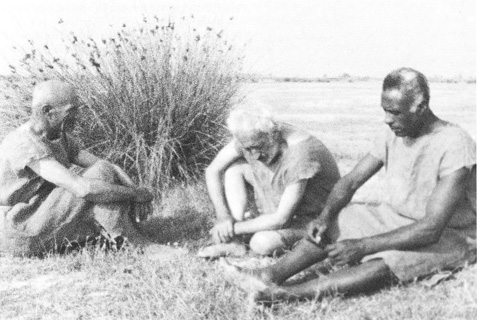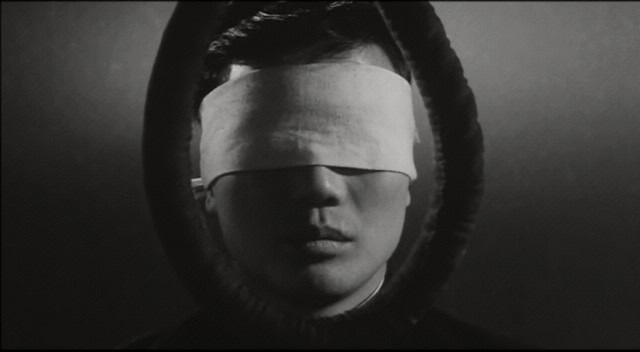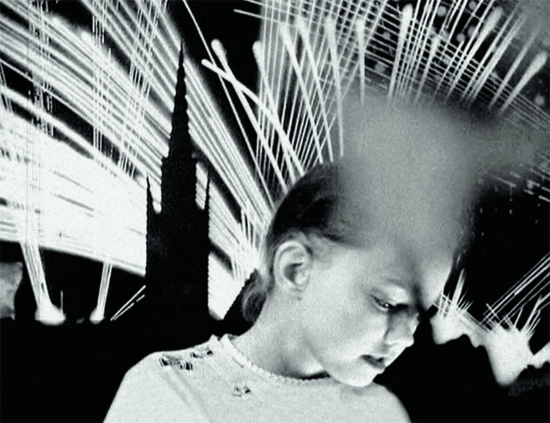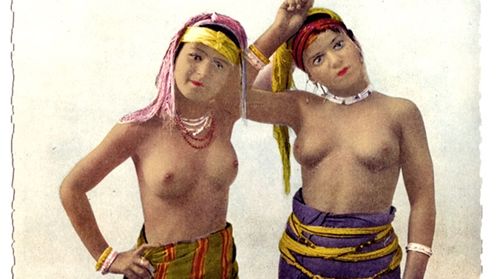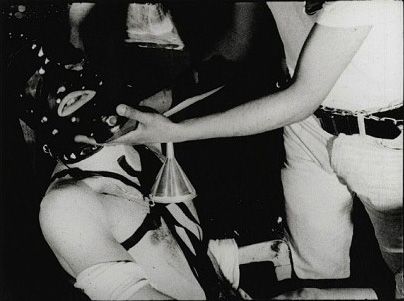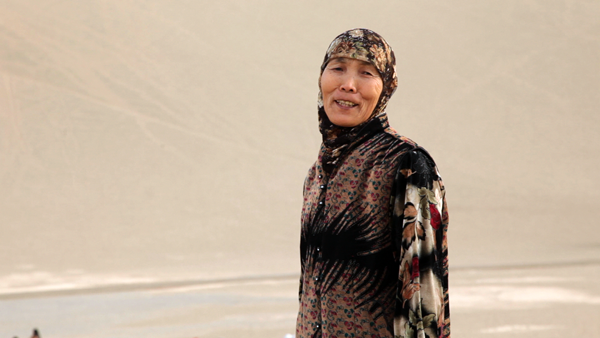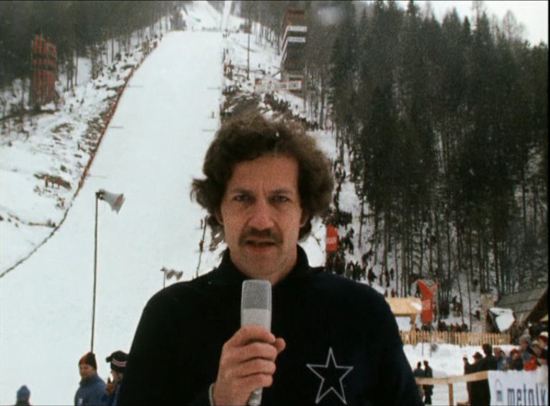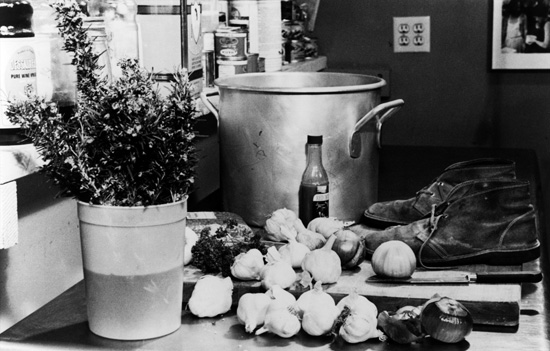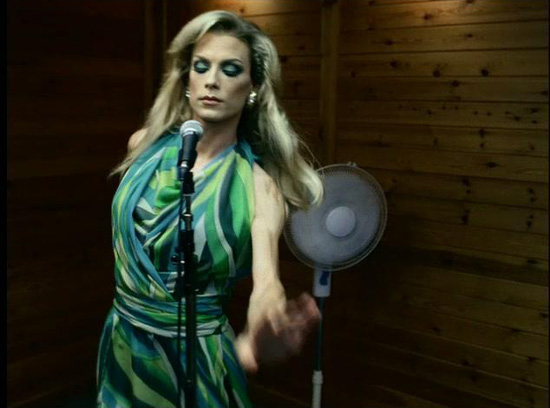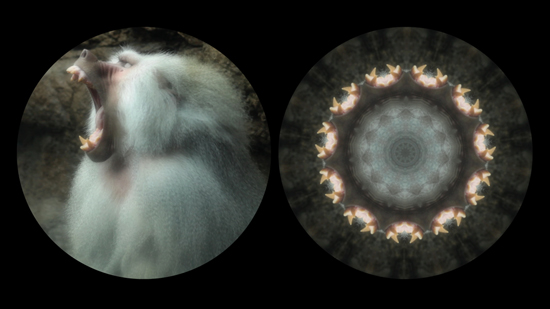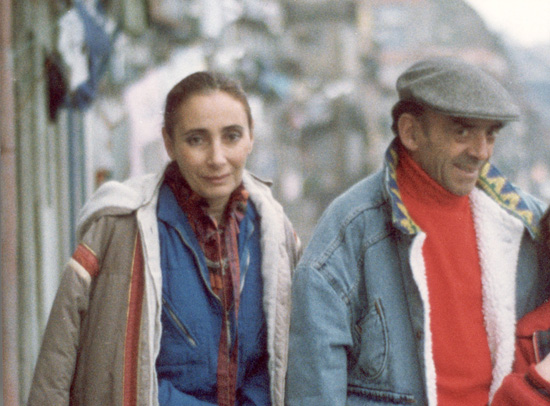
Interview with Yann Lardeau. Originally published as ‘A propos de Ana’ in Cahiers du Cinéma nº 350 (August 1983). ‘Ana’ will be shown during the Courtisane Festival (17-21 April 2013), as part of the programme “Once Was Fire”.
It took António Reis and Margarida Cordeiro six years to construct and collect the images of Ana in their minds, and to finally make them into a film. Both Tras-os-Montes and Ana are the work of a lifetime, in the sense that all its experience is the summarization and culmination of a solitary creative experience, unlike anything else, entirely linked to a region, a land – an insular creation. If a couple of artists such as Margarida Cordeiro and António Reis are so important to us today, it’s because at a time when the industry seems to unanimously choose for a blunt return to serially produced films, they admirably maintain the exigency of an artistic creation, of the production of a singular language, an exigency unmistakably inherited from the great tradition of painting and the Renaissance arts, one that can hardly be found anymore in the film industry, except for the Straubs or Bresson. They are undoubtebly the last ones to sustain this history, to testify to it in a lively way. This interview has been conducted in Berlin, after the screening of Ana at Forum. More than an interview, it became a conversation in which Margarida Cordeiro and António Reis responded to each other, echoing one and the other.
It is not easy to talk about your film: it’s not a narrative film, nor is it a documentary, and there are not so many films in the history of cinema that can be compared to it, except for singular films without antecedent, such as Vertov’s Enthousiasm, Eisenstein’s Besjine Louj – which doesn’t exist – or Murnau’s Tabu. It’s a film about a defined region, Tras-os-Montes, but also an inner look at the self of this region. Perhaps we can start with the way the films was concretely made, how you chose the actors, the costumes, the places, how you found the locations, with its color and light.
M. Cordeiro: I can not answer your question. I can only say that we ended up with this result. The moments of choosing, of working, I don’t remember at all. It has been a bit difficult, at times a bit rough, at other times calmer – but I don’t remember those times. The result is close to what we dreamed of making, but sometimes, often, we are far from what we intended to make.
A. Reis. Very far, although not really in the esthetic sense, I think… There are some things that we expected. There have been problems and then we arrived at other things that were as important and intense as those that were foreseen. And we have never tried to block off whatever mistake. We are terribly demanding. What has surprised us, is that when things were transforming, we found something else as powerful as what we expected, something that could replace it completely. And for us it was fantastic because this was the life of forms, a spiritual movement that was very genuine and profound. We have never been blind, but we have never felt programmatic either.
M. Cordeiro. We were guided by what we did.
A. Reis. It was terribly painful because we shot new and intense things, things we have lived through, that had to function as an articulation, a construction between what we had already shot and perhaps other things that we knew we could shoot as well. So, something like a real montage had to be found on the spot, in an attempt to relate all the dimensions: affective, chromatic, temporal, spatial, etc. It’s actually hard to find the words to resume and explain the cinema and the creative moments that we have lived through. Sure there are sequences that have been completely developed, but they are integrated in function of the subject. They were so rich that at the moment of shooting, we reconstructed them again. The editing was for us like an a priori architectural plan that was subject to moments of creation.
There are similarities, analogies, or even a progression positioned inside the shots. The red light inside the house, the peppers, the stain in the landscape, the strawberries the villagers are eating at the entrance of the church, the drapes covered with blood… There seems to be a very rigid progression of colours, notably of the colour red.
A. Reis. You have pointed out something very important for us. The ellipses in the film are constructed with simple colours, complementary to the interior of the shots, to what starts or what is before. Or else by the extraordinary leaps in the space. And if the light is universal, it sometimes introduces an elliptical movement. You know when it is spring, summer or winter because of the light. In regards to the decors and the light, we very much like the plastic arts, but we consider them as our enemies in cinema. These elements have to be bound with an umbilical cord to painting. Because I think that cinema technically doesn’t represent a different approach than what happened before in painting, for example. What would be absurd is that painting would come to look for the colours of cinema. There is all the same a family in regards to the figuration of colours, but our images are not plastic or pictural, because we think that painting and the plastic arts – just like the social sciences raise questions about the factory – are our enemies. We like them, we integrate them in our films, but as other materials and without subjecting ourselves to their expression.

The modern world is completely absent in ‘Ana’. Its features are not imposed on the landscape. The people never talk with others of the same age, it is always a generation addressing another, and in general, adults addressing children, like Ana with her little girl.
M. Cordeiro. It’s a modern reality because there are currently not many people in Tras-os-Montes, and there are a lot of elderly people.
A. Reis. We can almost say there’s a sort of geological reservoir in regards to the habitants of Tras-os-Montes. There is a wealth of different types. The different ages are like geological sediments. It’s a sort of cut in the geology of a social terrain. It’s very violent. Not as information, but as an expression. Things are gently marked by seasonal modulations. There are not many people. Immigration has in fact redefined the density of ages. But it subsists just as if one makes a cut in a terrain. It’s a fantastic wealth. At the same time it’s a desert. We have pushed the mise-en-scene to its extreme because we know the social life there very well. There is a sequence in which we push what we just spoke about to the extreme: the scene where they come out of the church. It’s sunday. The men are eating strawberries. There are three generations in the shot, sitting or situated in the space, in a composition that is not artificial. They see for us. But what do they see? I think that this shot is very meaningful. One day the sun made a sort of eclipse, it disappeared. And in counterpoint to this there is the eclipse the grandmother is talking about, creating a legend, appealing to the memory of the child. And we wanted exceptional conditions for this shot – looking for the location has caused us many problems. For three days we had all the equipment installed to shoot this panorama with that particular light, very clear, very limpid. For three days we stayed up there with the equipment, the whole team, and the actor. We filmed a few clouds in the sky, it was nice, but we found that it was not the spirit of the scene, despite what the cameraman said. For three days, in the terrible cold… It was only after three days that we managed to find what we wanted.
M. Cordeiro. You forget that we had tried to shoot this scene before.
A. Reis. A few months before, we had not managed to shoot this scene. So we went back. According to the camermen we had to shoot anyway, and we’d say, “No! No “. When the old woman speaks about the eclipse, it’s amazing, it’s so unique, because there is a very violent dialectic. We have never given up on this point. Working like we do, this inevitably brings very painful costs with it. Like when we stop for three days to wait for an image.
This is not to talk about ourselves, but just to give an idea. We supported the whole organization. I took 50% of the production on me. I kept all the clothes in our room because we couldn’t afford mistakes: in the mountains, we could not afford to forget anything. We received only 12,300 contos from the Portuguese Institute. It is very little, about a third of what they are giving to a movie these days. And the Gulbenkian Foundation gave us 1,500 contos. 14,500 contos for a two-hour movie filmed in the mountains for three seasons, with interruptions and inflation, I think this is a movie for free. With professional actors, can you imagine how much it would cost to play the grandmother Ana? She herself doesn’t earn a penny. We paid the professional technicians of course. But the actors did not get anything. And what we have personally earned we invested in the work we did for five years.
All what we earn, we spend studying. Studying for us is to live as well. For English or Americans, this is incomprehensible. Everything you see – fabrics, clothing,… – all this has been researched, designed and purchased by Margarida. Margarida sought out the extras. All this was done without money. We have spent nothing for the decor. This is a job that usually pays very well. But pellicule on the other hand, that we used at will. The film has one hundred twenty-five shots. However, for night shots that were complicated, we did six or seven takes. We usually do two takes just to be sure.
So you worked with a very small team?
A. Reis. A cameraman, an assistant and a sound engineer, a boy who gave a helping hand here and there. We had this huge advantage that Margarida could rigorously control the composition of shots. This is the first time we had the possibility. It was possible to frame as if the camera was a microscope – me with my eyes, Margarida there, on the spot. So, immediately after we would exchange impressions about what we felt, about the effect of a shot. Luckily there is some terrible complicity between us. We could not see the rushes there. We only saw them fifteen days after. We didn’t have any script or photographer. We did all these things ourselves. I do not say that out of megalomania.
M. Cordeiro. Instead, it was misery.
A. Reis. It’s misery. Those are the working conditions to be accepted. Never give up, accept to make bread with sand. Even if the film is stopped, better a film that is stopped.
We shot for seventy days. We did our scouting during the holidays. Knowing about these forms and events there beforehand helped us to advance a lot in little time and in bad conditions. Margarida has a very precious memory. Other filmmakers who go there serious risk to fail because they do not have our background. They may behave a bit like bad anthropologists: they arrive, they shoot, they return. When we are there to work, we do not survey, we do not waver, Margarida and me. Margarida was born there and I have known the province for thirty years. It’s as if I was born there.
This is a project that you have been carrying with you for several years. Shooting concretisises a period of research. In regards to the conception of the film, it represents very little time.
A. Reis. We consider ourselves as maniacal and slow. But in fact we are very incisive and very fast in creating. As we have complementary sensitivities, we act as one person. But we are working with two. We do not know what we will find or what we want, and I mean that in the positive sense. But we still have some certainty, we are certain of ourselves in the course of filming, so we are very fast. We can have doubts about the form, never about the team.
M. Cordeiro. We are not very rational while working. We are very sensitive. We work with our sensitivity. We were forced to work quickly because we had a very low budget.
A. Reis. There were days when we did 500 km to make only one shot. The shot of the prairie, you remember, that day, we had to do 600 km. In the course of the whole film, we did about 80.000 km.
M. Cordeiro. Tras-os-Montes is a big province!
A. Reis. Well, for example, there is the fox. We got him when he was small so that the child could familiarize with it for four or five months. For the ducks, you know, we had brought eggs from the village, me and my friend. They were placed in an incubator, but one day when I was in Lisbon the electricity was cut off to the north, and the eggs, pff … I had to drive the two thousand kilometers all over again with my friend to buy two ducklings of the same mother. We gave the ducks tot a shepherd who could prepare them to do what we wanted. And the most complicated shot was when the grandmother comes to the window at the end of the film, just like in the beginning. This shot was made in the first take.
M. Cordeiro. It was a family affair. The girl really lived that scene. She was a little shocked too.
How is the work divided? What is the share of each, and is this visible in the final product?
M. Cordeiro. There is no leadership, I think we start from dissimilar places. Sometimes. But when we start shooting, we have already agreed. During the work itself, we never disagree. We debate a lot, we talk about. But when filming, we have already reconciled – even when there are widely divergent positions.
A. Reis. When there are small differences without consequence, we have enough awareness of the creative activity of each other, so we don’t need to explain our point of view.
M. Cordeiro. We are very different. António says that we have very different personalities, very complementary. When we work, it is as if we were a single individual. But our sensibilities are very different.
A. Reis. There is a contradiction that defines us well. In Portugal we say: “What in me feels, thinks.” I think Margarida and myself think what we feel, feel what we think.
M. Cordeiro. We made two films, I think if there will ever be a third film, the conditions would be the same. Because we won’t be alone, fortunately. I would not be able to work alone. We have the same goal, the translation of the same emotions, the same memory, so we work together.
A. Reis. It remains stable up to the grading. The complicity continues during the montage. Sometimes when I think about it, I do not know how other filmmakers, like Jean-Marie Straub and Danièle Huillet, work together. But I think in a sense, it is a collective creation that reunites. If we can speak of collective authors, it is in this sense that they become one for a collectivity.
M. Cordeiro. I think it’s stronger when you’re with two.
A. Reis. And when you see our films, you can not say that this is Margarida, this is Reis, this is masculine or feminine. The synthesis was carried out there.
There are many children in the film. I’m thinking of the scene in which we see a little boy playing with a prism and projecting light on the wall, as if it were a movie screen. There is another shot in which we see him explore an image, a reflection in the mercury. As if it pointed out a privileged position of the viewer, a priviliged look on the story of Ana, which is the one of childhood.
M. Cordeiro. I do not think so. Those scenes also have other meanings. These are simply children’s games. A privileged viewer can see other meanings in it, in cinema, in the light itself. But I think those scenes are worth only what they are worth. These are fragments of time, moments of childhood, first and foremost.
A. Reis. It is also, I believe, a development of the popular imagination. Because children, in a certain historical period, were amused or delighted with vegetable things and extracted a particular poetics from this. And we ourselves have the same fascination for other objects that are equally magical. We find it amazing that children enjoy seeing a burst of light in the water.
M. Cordeiro. Same thing in dark houses with a ray of light.
A. Reis. We believe that these children who discover the world like trees growing, may then have the same astonishment when discovering a new substance, such as mercury, or a prism decomposing the light from the sun. But these elements always have an independent existence for themselves in the film. Because precisely in this scene the father cuts glass with a diamond. There are also oppositions in the materials: wool, silk, mercury, milk, outdoor light …
M. Cordeiro. All that was on purpose.
A. Reis. And … the inner light. Even in the scene with the prism, there is a cinema screen. But there is a tableau in the dark. The final light is brought in by the father, when he opens the window. However, there is a dialectic of light. That of physical light, the light of the school, when that light is imposed on the child who has to learn. There is something living there, a poetic phenomenon. Upon hearing about Mesopotamia, children are delighted with this distant history – which for us was imposed, but there it isn’t. There is a tradition that continues in a good way. Progress in a good sense means that a worker can marvel at a form that he doesn’t understand, like a tractor, just like he marvels at a horse, when in reality he can not marvel at all: it is impossible because he has to pay the debts to the bank. Children have the chance that they have nothing to pay. They prefer that parents to take care of that. It is so beautiful only to enjoy the earth during the first years on the countryside. But Margarida’s right, these scenes are only worth what they are worth.
Mr. Cordeiro. I think we are giving literal images, images of a vision that is at immediate and sufficient. Then the viewer gives back what he has in him.
There is no continuity from one scene to another, as if there is no action fully developed. There are rather fragments and moments. At the same time each of them is full, whole. It seems to me that this kind of emotion is more specific to a child than to an adult, that these images belong rather to the time of memory, then that of the present or the past, that this really inherent of cinema and that narrative continuity stemming from a scenario is an effect derived from literature.
M. Cordeiro. This also what we wanted. There certainly is continuity, there are many continuities which Antonio has already spoken about: shapes, colors, fabrics. But there is no classical narrative continuity.
A. Reis. All of this is deliberate. You know very well that, in that sense, there is a liberation of cinema. There are narrative masterpieces, but always with something else as well.
M. Cordeiro. Things are never situated on the level of events.
A. Reis. There is no psychology in the film. There is no symbolism. All that is in the frame forms a texture. If we consider a narrative as a tissue, then our film is narrative. If we consider that there is narration only when there is a history between people, then our film is not narrative. Yet we have narrative sequences. Obviously for the construction of the final sequence, we chose a dramatic register because a tree like Ana can not fall like that.
The film actually only speaks about succinct things. In this sense, the colors, the trees, the light, the time of the film, the duration, are narrative elements just like the things that people do, their attitudes.
M. Cordeiro. In real life, I also believe that events do not involve linearity or occur linear. I think they overlap. For me, it’s like that and, to simplify, we just summarize a line among others, and I think the film has to do with how we look at life.
A. Reis. Obviously we are in a microcosmic world. Men, women, etc. But personally, Margarida and myself, we try to compose a dialectic between the microcosmic and the macrocosmic in cinema.
Mr. Cordeiro. It is always a way of investigating, of understanding for us. Why are things like that? Why did things in our childhood happen like that? There are many issues that you and I have encountered in our childhood, that we are still searching for. Cinema is a means of understanding for both of us. The film is a result that others can see, can love or not love. It’s secondary to me.
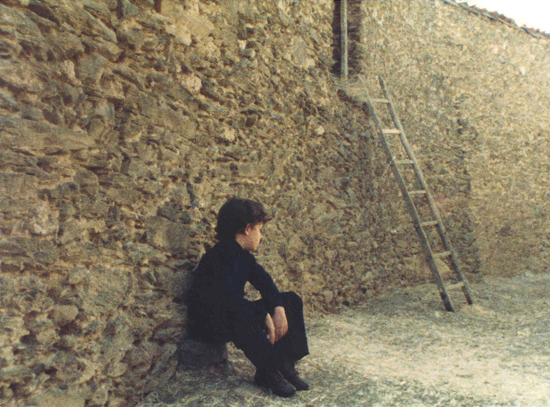
Cinema as a method of deciphering the world and ourselves?
M. Cordeiro. I believe that if we make more movies, we will continue on this path.
A. Reis. I thought we had a kind of trauma of beauty.
M. Cordeiro. Not beauty: intense things that have affected us.
A. Reis. It’s is still a trauma. The shot that seems to be the calmest is sometimes the hardest to shoot because there is no defense, and for us it’s a terrible responsibility. It is terrible to be there with the camera at this time, because the usual defenses vis-à-vis the viewers are just not there. And yet, we want that when the viewer sees this shot, that it is so important … It is difficult to explain. Even now, while speaking, we are seeking. We still learn a lot from our film, Margarida and I. And during the tenth vision, we saw things of which we thoughts that they are perhaps the most important in the shot, as we did not see it at all before… There is a huge reservoir in the forms, in the organization of the shots. We believe that our film is composed of a partition of images and a partition of sounds. During the screening here, the sound was amazing … I could hear it like never before. I told Margarida: “Finally, we have our sound in the film.” The images are changed, just like we wanted, by the intrusion of the sound, and vice versa. If we fail to obtain this result during projection, we feel that the public can not love our film.
Who are the filmmakers who influenced you the most?
M. Cordeiro. Me very little. Because I don’t go to the movies, because I have a life a little more difficult.
A. Reis. I can not say that we were influenced. There are filmmakers that we like, as we like many things in life. There are filmmakers we love intensely, but who are so contradictory, like a haiku or the Odyssey, and who we love primarily as filmmakers, not because they are close to us, to what we do.
M. Cordeiro. Because they have very strong personal visions.
A. Reis. Because, for example, for us a haiku is as fantastic as the Odyssey or the Iliad. We have no particular influences, but what we feel is that there is poetry with shapes of varying complexity. It’s like music. For example we like Pierre Boulez, but we like the contemporary dodecaphonic music as well. What is important for us is that these musicians are creators. I just think that for cinema it’s the same. We like the most contradictory filmmakers, in regards to genre, by style, form. In this sense, if you want to talk about influence, we are influenced just as everyone is influenced by the things one likes. As a direct result on our work, I think we have no influence, because, for us, it would deprive us of any reason to create, if we think of one person or if we are to do as others. We create precisely because it is a desire and a risk. And to provide to others the pleasure of seeing original creations living.
Perhaps because of this, we create very little, very slowly. But time for us is not a matter of chronology, it is a matter of enunciation. When one speaks of our relationship with the Portuguese contemporary cinema, we absolutely refuse this kind of categorization. It is normal to say it or try it, but it repels us so much. There is a requirement of cataloging everything.
I think we are crazy filmmakers. You have this saying in France: “une personne alambiquée” – “a person convoluted.” Our relationship with cinema is more or less disturbing and especially convoluted. It is obvious that we are alone. We have already said that when Tras-os-Montes came out. Not because we are egocentric. It is also true for historical reasons. We do not feel like isolated individuals, but we feel that we are not heading in the wrong direction with the fashion and the big crowd. It is a historical situation and not egocentric.
You spoke earlier of geological types, which presided over the selection of actors. There is also a a geography of names.
A. Reis. Names are especially euphonious. They were chosen for their euphony. Their musical expression is, let’s say, their first expression. The euphony is luckily a source of enchantment. For example, “Alexander” is a Roman name. And it is obvious that the Romans were there. “Ana” is a name with a deep etymology in Europe, with specific connotations.
In this place, there is a crossover from civilizations as you know. We did historical research on very distant names. It’s nice to have spoken about Mesopotamia in opposition to Ana or Miranda. These are very pretty names. Miranda means “see”, “look”, in Spanish. In the film, the name of Miranda, when it is pronounced, should create a sense of expectation. When the grandmother is at the lake, the name Miranda resounds a bit like a muffled cry rises, in a form of an opal. There is an intellectual direction in that choice, but they are, as Margarida said, common names. These are names that you find in Portugal, so mixed, with this great historical weight, and so far apart. The names of Tras-os-Montes, you will see that some are of Celtic origin, other Arabic, other Roman, etc.. and that they give a historical topography of occupation of the region. That is why we have a kind of pride – “le cheval d’orgueil” – not in the rural sense of Bretagne, but Tras-os-Montes is copper, tin, salt. The words in the film, it is music first, already by their absence …
M. Cordeiro. They stand out better.
A. Reis. And the name of Ana is the balance and imbalance. A-A is the balance and the N is not yet imbalanced, but it can already make everything unstable. N is the dialectic return of plants back to the beginning.
M. Cordeiro. It is one thing and its opposite.
A. Reis. It is not a symbol of course. It is a very small, quiet name. The journey with words, speech – you remember the processing of words, speech, names, and it’s always different, and I think we pushed these means to their final end in this film, with all their possible wealth, without indication, and this in a very rigorous construction.
What are your plans?
M. Cordeiro. Starting for us is always a bit slow.
A. Reis. We do not sit at the the table and make plans to make our films, it’s material from our own daily life.
M. Cordeiro. So far we have not adapted any book. It is easier to adapt a book and working on it. It is a little more difficult for us.
A. Reis. Margarida does not mean that it is easy to adapt a book. But it is customary to do so. I think maybe it will happen to me one day, but for us it will be a very serious problem. The imagination works on a foreign experience. This is so the opposite of what we are constructing.
Mr. Cordeiro. It is a work without a net. For me, it is more difficult.
——————————————————————————————————————————————————————-
Translated by Stoffel Debuysere (Please contact me if you can improve the translations).
In the context of the research project “Figures of Dissent (Cinema of Politics, Politics of Cinema)”
KASK / School of Arts
